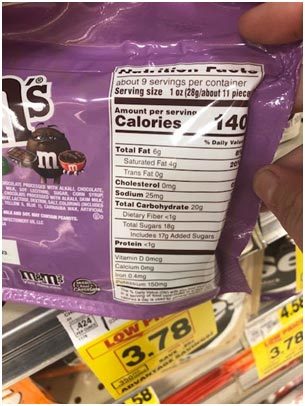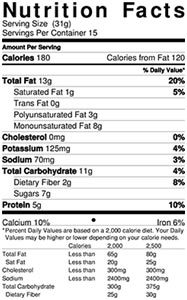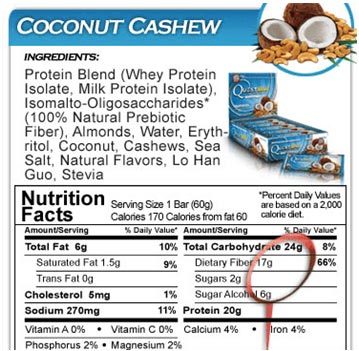Our overall philosophy for nutrition at Mash Elite is to meet our clients where they are. While macronutrient counting is the foundation with most of our clients, it can look very different based on the goals, needs, and knowledge of individual clients.
As a nutrition coach, there are a couple of important things you need to know about a client besides what their needs and goals are.
You need to know what THEY know.
Do they know the basics of nutrition? (What is a calorie and why is it important?) Have they ever counted macros before? Do they know how to read a nutrition label?
We have two main goals with our nutrition coaching at Mash Elite. One is to help our clients reach their goals. The other is to teach them.
To learn more about the basics of nutrition, check out this article I wrote. I always include this article in my welcome email to my clients! It breaks down what I want and need my clients to know if they are to be successful. They don’t know what they don’t know. And, they may not know what to ask. This helps to take control right off the bat and learn the whys and hows of basic nutritional components. https://www.mashelite.com/nutrition-basics/
It is also extremely important to learn how to read a label.
What you should be considering is:
- Serving size
- How many servings there are in the package or container
- Sodium
- Protein
- Fat (especially saturated fats)
- Total carbohydrates
- Sugar content
- Dietary fiber and sugar alcohol
The above is important because you will often find multiple servings in a package or container and what is listed on the labeling is for a single serving. For instance, take a look at M&M’s. Depending on the size of the package, you could have 4-6 servings in it. The label details the nutritional content of one serving. If you eat the whole package, you would have to multiply what is on the label by 6!
Take the following label for instance – it has 9 servings in the package. 11 pieces are 140 calories, 20g of carbohydrates, 6g of fat, and less than 1 gram of protein. Unless you count out 11 pieces and hide the bag, have you ever eaten just 1 serving??? I know it’s very challenging for me!

Let’s take a healthier food and look at how not understanding serving size and labels can be detrimental to your goals. Here is a label for cocoa almonds. YUM! This particular package has 15 servings! 31g is a serving. This is equal to about 20 or so almonds. Those 20 almonds have 180 calories, 11g of carbohydrates, 13g of fat, and 5g of protein. Same as with the M&M’s, unless you count out 20 almonds and hide the package, how often do you just eat one serving? I know I can put 5-10 almonds in my mouth at one time!

Deeper into Carbs
There are two ways to look at carbohydrate consumption: total carbs and net carbs. Total carbs include all the different types (starch, sugar, fiber) while net carbs only include what the body can break down into glucose, which excludes fiber and sugar alcohols. Depending on what your goals are and if you are on a low carb or higher carb diet will determine whether you are counting overall carbs or net carbs.
For a visual, below, you see a label for a Quest protein bar. The total carbohydrates are 24g. Dietary fiber is 17g and sugar alcohol is 6g. The net carbs for this bar would be 1g (24-17-6= 1g). I personally want my clients to count it as 24g rather than 1g, but that may not always be the case. For example, when I was on a low carb, high fat, high protein plan, I could eat protein bars, but they had to have low net carbs like the Quest bar below.

Personally, my body does not do well with sugar alcohols and high fiber products. I get bloated and uncomfortable. For others, it doesn’t bother them at all. I find it is best to minimize how much sugar alcohol you have in your diet and get your fiber from your fruits and veggies rather than a processed protein bar.
Whole Foods
When it comes to foods like fruits and vegetables – as well as traditional meats like fish, chicken, or beef – macros and quality is pretty straight forward. However, if you are looking at quantity (macro counting) rather than just quality (paleo/keto), you want to still know the breakdown of whole foods as well. You will still want to look at:
- Sugar in the fruit (it is natural sugar, but some fruit has a much higher sugar content than others). An example would be a cup of strawberries versus a banana. A cup of strawberries has 11.7 carbs (3g of fiber/7.4g sugar) while a banana has 27g of carbs (3.1g of fiber/14.4g of sugar).
- Fat in the meat (different cuts of meat have higher fat content). An example would be a 4 oz ribeye versus a 4 oz sirloin. The 4 oz ribeye has roughly 19g of protein and 27g of fat while the 4 oz sirloin has roughly 23g of protein and 12g of fat. If you were counting your macros and were on a 50g per day fat intake, eating the ribeye could be problematic without prior planning.
Here is what I suggest, especially if you are new to tracking what you eat.
- Keep a 3-day diary of everything you put into your mouth. That includes liquids, food, and supplements.
- Write down how you were feeling around those meal times. Were you actually hungry or were you eating out of boredom?
- Don’t hold back or be embarrassed. Write it down.
- Plug it into an app like My Fitness Pal.
What this is going to do is show you trends in the way you eat. It will also show you how much you are actually eating.
For some, it will be a wake up call that you are overeating. For others, it is going to say you aren’t eating enough. Your body needs a minimum amount of calories (basal metabolic rate) for it to function with involuntary actions such as breathing, hormone production, etc. Add in any activity to include any type of movement (total daily energy expenditure) and the body’s requirement increases.
Both BMR and TDEE are influenced by things we cannot change like our age and our gender. But, they are also influenced by our lean muscle mass to body fat ratio. TDEE is influenced by our activity level. If you don’t already know these two things, it would be a good idea to find a nutrition coach like we offer here at Mash Elite. Having a nutrition coach is the ideal route to go. You have the accountability aspect, the expertise of the coach to make changes based on your feedback, and you get customized planning based on your needs and goals. If you aren’t quite ready for that, there are calculators you can search for that will give you a good starting point.
[thrive_leads id=’9195′]
I will close with this. No matter how you choose to reach your goals (macro counting, keto, paleo, carnivore, vertical diet, etc), some absolutes still hold true for all.
- Prior planning is key to success
- Read your labels
- A calorie is a calorie no matter what type of diet you are in. If you consume more calories than you burn, in all likelihood, you will gain weight. If you burn more calories than you consume, in all likelihood, you will lose weight.
Don’t just blindly follow the latest and greatest magical diet. Read and learn the science of nutrition and experiment on yourself what works best for you.
Author:
About Crystal: Crystal is Travis’ right hand person! She is a USA Weightlifting National Coach and holds her NSCA – Certified Strength and Conditioning Specialist certification. She is an RN with a Masters degree in Nurse Education. She also holds multiple other certifications to include CFL2, USATF, Precision Nutrition, and Flex Diet. She is also an international elite ranked powerlifter.